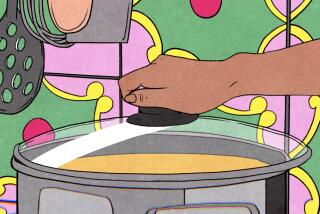NONFICTION - Feb. 2, 1986
- Share via
ART ON THE LINE 4, HOW TO MAKE VERSE by Vladimir Mayakovsky; translated by Valentina Coe (Curbstone: $4, paperback). A good idea--a book small enough for the coat’s vest pocket and large enough in scope to fill a half-semester of polemic for the comparative literature student. A good idea also--Vladimir Mayakovsky’s poetry canon, translated by Valentina Coe, fourth in a series of essays by 20th-Century artists speaking “from the point where their commitment and art interact.” Indeed, hand-sized manifestoes were traded and reformulated as frequently as poetry movements during the 1920s post-Bolshevik literary entrenchment of which Mayakovsky was spokesperson. Mayakovsky rejected both French Symbolism and the classical canon of Shakespeare, Byron and Tolstoy. Unlike Anna Akhmatova or Osip Mandelshtam, whose Acmeist movement personalized themes of love and religion, Mayakovsky’s Futurist credo followed the Stalinist dictum that literature should serve the state’s “social command.” “Old rules with ‘moons and Junes’ and their alexandrines won’t do.” “I want/the pen to be on a par/with the bayonet;/and Stalin/to deliver his Politbureau/reports/about verse in the making/as he would about pig iron/and the smelting of steel.” He was serious--art as a “class weapon,” an “integral part of the production process,” as Futurist a goal as a computerized poetry processor programmed to make creativity a mass phenomenon. This book is not for the cursory reader of Mayakovsky’s verse. Enlightening for the scholar interested in the exegesis of his craft.
More to Read
Sign up for our Book Club newsletter
Get the latest news, events and more from the Los Angeles Times Book Club, and help us get L.A. reading and talking.
You may occasionally receive promotional content from the Los Angeles Times.







